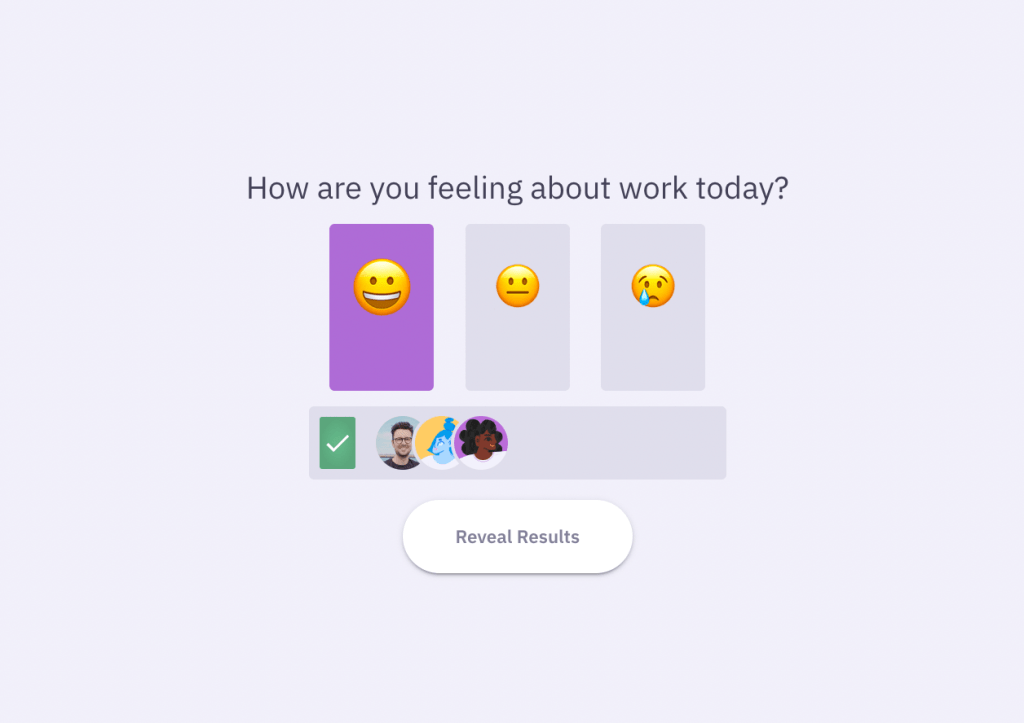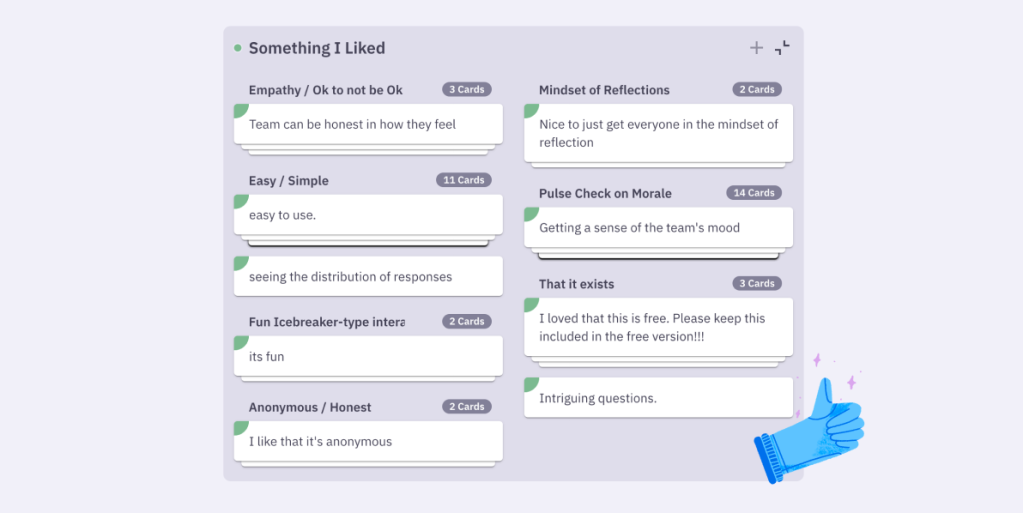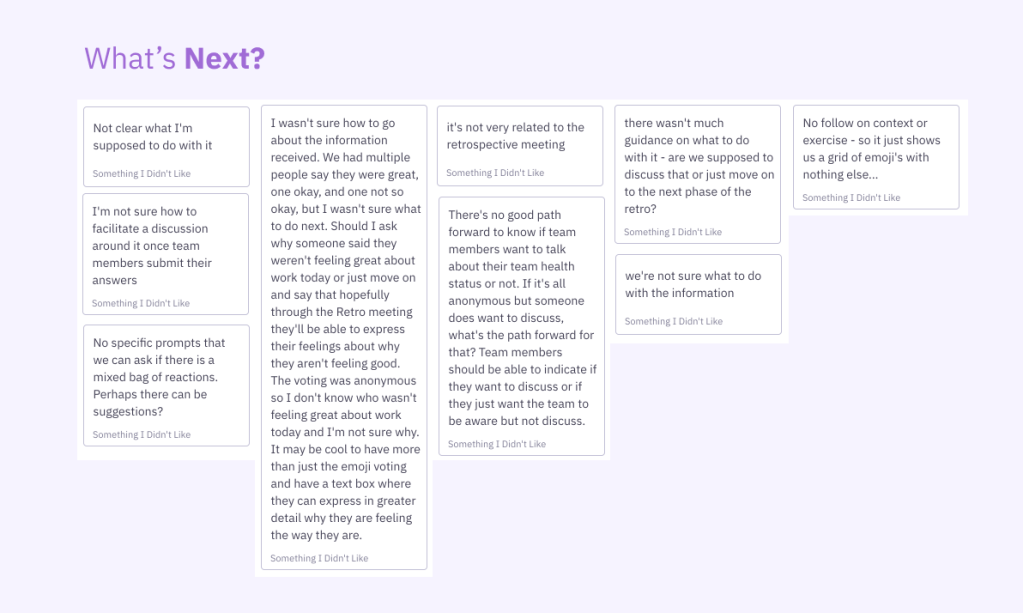#360 – Feedback through Chat
Friday Ship #360 | August 11th, 2023

This week, we wrapped up the launch phase of our Team Health feature and officially made it part of our Team plan.
Team Health is one of our most-requested features, but we’ve been hesitant to tackle it for three reasons:
- It’s not big, but not small: Before this year, we primarily prioritized BIG features – things like Sprint Poker or Standups, significant undertakings that added an entire new meeting type. Those rise to the top in our strategy process, and off we go. We’d also tackle small enhancements – tweaking a button – as stand-alone issues that get picked up as we have time. Team Health fell in the middle: we didn’t think of it as a transformative feature, so it wasn’t hitting our strategy process, but it was too big to get scoped up with small bits of extra time.
- It felt like feature chasing: Some other retro products offer team health, and we weren’t sure what we would create that wasn’t the same thing that’s already out there. We prefer to make things that are clearly better in some way, vs making yet another version of something.
- We’re a bottom-up tool and we don’t like surveys: Most team health tools and the practices that inspire them seem to be more about managers having control than the team working together better. As a result, team members are typically asked to fill out a lackluster and complex survey-like question form, only for their manager to be able to ‘manage’ their morale. This didn’t feel aligned with our principles.
But earlier this year, our mindset shifted. First, we got enough user requests that it was hard to ignore this need – we didn’t want our principles to stand in the way of listening to users. Second, we started focusing more and more on making things smaller. If Team Health was medium, could we make it small?
We decided to strip down the feature to it’s most basic, simple iteration: 1 question, 3 emoji response options, reporting in the meeting & summary.

This is a far simpler implementation than some other tools offer, and we expected to hear a lot about how it fell short. So, alongside making it available to all users in the launch phase, we added a chatbot to ask them how it went. The responses flow into our product feedback Slack channel, so the whole team can learn.
The response surprised us: not only did more users give feedback than we expected, but it was overwhelmingly positive (69%)! Instead of being annoyed at the tool being so simple, users said they appreciated the ease-of-use.

What’s more: what users wanted next was not what other tools offer:

We’d expected users to ask us to chase other tools, but instead the requests were to integrate Team Health into the meeting more and give them ways to have deeper conversations based on what they learned.
Based on this feedback, we started by introducing tips to the Team Health screen, and are looking into improving the async flow – two more examples of how going smaller is helping us go faster.
Metrics

Our Top of the Funnel is showing positive trends, but we’re facing a slight slump in active users and signups.
And while meeting engagement remained low, we achieved a milestone with over 300 weekly standups conducted for the first time 🎉.
This week we…
…published a guide on Conflict Resolution. Our first post written exclusively for our new Open Book blog!
…wrapped up a company-wide retro on our culture. We’re living through a chaotic time for startups & the tech scene, starting with the SVB crisis earlier this year and continuing through layoffs across the industry and a suffering VC market. We really value the company we’ve built, especially being centered on psychological safety and transparency. So, in response to these challenging times, we’re making our culture a priority, starting with gathering feedback on what’s working and what we want to do more of.
...published a blog cataloging 9 Team Health Check Methods.
Next week we’ll
…start shooting long-form videos for our YouTube channel 🙌. You can follow us here
